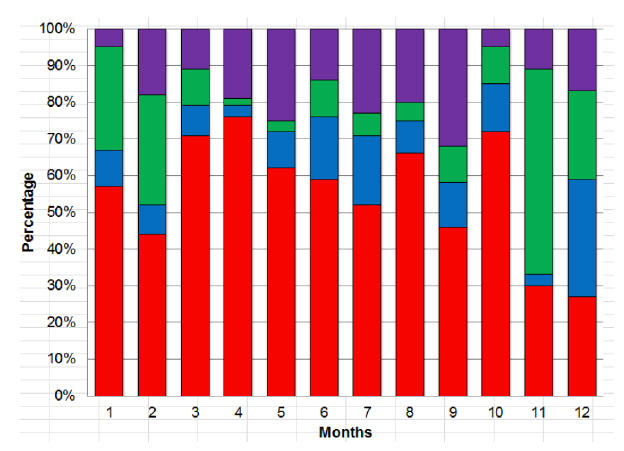Raman LIDAR Operational use
General Remarks
Raman lidars are sophisticated remote sensing instruements used for various applications in atmospheric research (see D. Whiteman, 2003a and references therein). There are no commercial water-vapor Raman lidars available and every system is a prototype. Most of the Raman systems are operated on demand and provide data only under optimal meteorological conditions or for special events.
However, due to the technological improvements, operational nitrogen Raman lidars have recently been developed and industrialized without neither additional maintenance compared to standard ceilometers nor specific alignment processes.
Operationality
Despite the huge progress in laser, detection and acquisition technology, to run a Raman lidar on an operational basis (system availability 24/7) is a big challenge. To our knowledge there are three operational systems worldwide: The "turn-key" Raman lidar of the Atmospheric Radiation Measurement (ARM) Goldsmith et al., 1998 for water vapor and aerosols; The Raman Lidar for Atmospheric Moisture Sensing RAMSES (Reichardt et al., 2001), operated by the German Weather Service for water vapor, aerosol and temperature profiling; The Raman Lidar for Meteorological Observations RALMO (Simeonov et al., 2010), operated by the Swiss Weather Service for water vapor, aerosol and temperature profiling.
Figure 1 shows the data availability of the RALMO system of MeteoSwiss. The average data availability in 2011 is 55%. The potential average data availability (no rain, no low clouds) is estimated to 70%. Regular maintenance (flash lamp exchange, laser/lidar alignment) accounts currently for about 5% of the down time (1-2 days per month). Formation and training of the operators as well as a good management of spare parts are key factors for a high system availability.
Networking
The European Aerosol Lidar Network, EARLINET, is dedicated to aerosol climatology. It presently covers 27 stations that perform aerosol profile measurements in a coordinated manner. The network is not operational, but during the eruptions of the volcanoes Eyjafjallajökull in 2010 and Grimsvötn in 2011 it prooved to be able to provide aerosol information in real-time and to perform a monitoring on an European scale for several days (EARLINET volcano reporting).
The Network for the Detection of Atmospheric Composition Change, NDACC, is a global research network including a multitude of observation techniques to cover the atmosphere from the ground up to the mesosphere. There are presently 28 lidars contributing to NDACC measuring ozone, water vapor, aerosols and temperature (NDACC lidar working group).
Back to Raman Lidar
